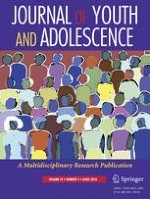28-11-2017 | Empirical Research
Reciprocal Associations between Educational Identity and Vocational Identity in Adolescence: A Three-wave Longitudinal Investigation
Gepubliceerd in: Journal of Youth and Adolescence | Uitgave 4/2018
Log in om toegang te krijgenAbstract
Education and vocation are core identity domains in adolescence. School is a normative social context in this developmental time frame and the formation of an educational identity is embedded in the goals that youth pursue in school. One of the main goals of education is to prepare young people for their future careers. Hence, educational identity should support the formation of vocational identity during adolescence. Considering the limited evidence on the longitudinal links between these two domain-specific identities, we conducted a three-wave investigation, testing the moderating role of age group, gender, and type of school. Participants (N = 1030; 59.3% female) were adolescents (M
age
= 16.72 years, SD
age
= 1.23, age range 14–19 years) who completed self-report measures of educational and vocational identity three times during an academic year. We underscored reciprocal associations between educational identity and vocational identity. The results indicate that strong educational commitments supported the formation of strong vocational commitments across time. Adolescents who were involved in the in-depth exploration of their educational choices also reported more vocational exploration during the school year. In turn, vocational identity processes also supported educational identity formation, especially the reconsideration of educational commitments. In terms of moderators, we underscored that vocational commitment making and vocational flexibility bolstered educational commitment only in early-to-middle adolescents. Educational in-depth exploration fostered the identification with vocational commitments only in girls. Educational reconsideration of commitment promoted vocational self-doubt only in adolescents attending work-bound high-schools. Implications for research and practice are discussed.
